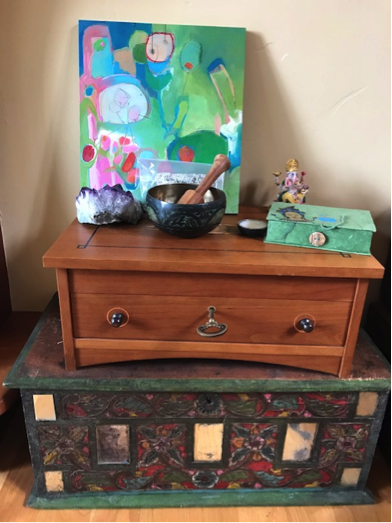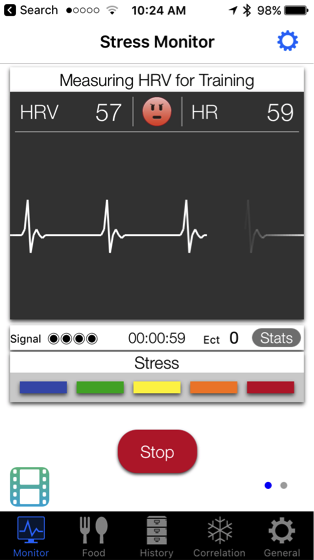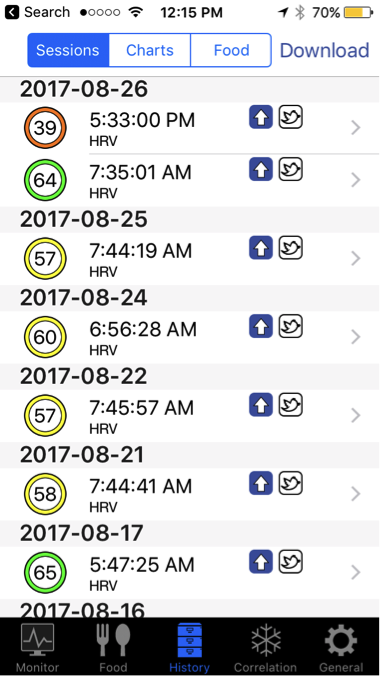What’s your morning ritual?
We’re a bit nuts in the Gottfried household in the morning, which doesn’t surprise many who know me or my wife, also known as Dr. Sara. She’s a doctor who practices functional medicine and a three time New York Times bestselling health author. And as you likely know, I’m a green building nerd, obsessed with not only LEED Platinum buildings, but those that have gone deeper into regeneration of energy, water, and our health.
How we wake up each morning has lasting impact. Do you race out of bed to the kitchen to get your morning caffeine, or do you meditate quietly for 30 minutes as you calm your sympathetic nervous system and lower your cortisol? Do you take the time to eat a nutritious breakfast, or consciously skip it as you rush out the door? And what measurements or supplementation, if any, do you perform or take each morning?
This blog shares the quirky inside scoop of our morning rituals – mostly health based, that help set us up for a fabulous day of energy, mental acuity, and athleticism. Most of them I like, a few are tolerable and one I hate…
The beginning
When I wake up, usually just before 7 am, I sit up in bed and see if my wife is up, which she almost always is–unless I have an early morning cycling century or flight to race off to. Sara sets her smart alarm for 6 am to begin her morning practice. She starts by sipping hot water with lemon and then saunters over to the living room carpet where she has set up her morning shrine [see photo]. First she does 30 minutes of meditation [assisted by her Muse brainwave band], and then yoga and rolling. I see an active journal notebook nearby for morning inspirations and observations.

Dr. Sara’s Morning Shrine
Next, I look over to see if the dog [our almost one-year-old Labradoodle puppy, Juneau] is up and looking like she needs to go outside to potty. But usually, she’s out cold, opting for more ZZZs.
Sleep & RHR [Resting Heart Rate]
Educated as an engineer, I love measurements and data tracking [hopefully showing improvement]. I grab my iPhone and hit my Jawbone UP3 app to measure and track last night’s sleep. My sleep varies, but generally, I get my eight hours; if not, I’m not only cranky, but my physical and mental performance declines. The app measures lots of sleep variables [see photo below]: how long I sleep, how much REM and deep sleep, number of times awakened, and for how long, and my RHR [resting heart rate].
My hope is that I get at least one hour of deep sleep and ninety minutes of REM [56 minutes last night and 1h 31m REM]. REM deficiency can cause mild psychological disturbances, such as anxiety, irritability, hallucinations, difficulty concentrating and appetite may increase [yep]. If my deep sleep is lacking, my body doesn’t effectively repair tissues, build bone and muscle and strengthen my immune system.
I hope for a RHR of around 53 or lower [54 last night]. If it’s at 60 or higher, I need to slow down my exercise that day, or may be getting sick, or didn’t sleep enough. My heart rate tends to run very low as a result of extensive cycling, so don’t fret if yours is higher [60 to 100 is normal]. However, a lower RHR can indicate that you have a more efficient heart and better cardiovascular fitness. I’ve seen this happen for me, getting down to a low of 47 this summer as my training escalated and included regular HIIT workouts [high-intensity interval training]. What’s important is to use your own RHR as a benchmark for change, which provides you with important information about your health.

David’s UP3 Sleep Measurement
HRV [Heart Rate Variability]
Next, I put on my Wahoo heart rate monitor strap around my torso. Then I boot up my SweetBeat Health app which syncs to my heart rate monitor and measures my HRV [heart rate variability]. HRV measures the interval time between your heartbeats. It indicates relative level of stress and whether or not you’re sympathetic or parasympathetic nervous system dominant. It has been used for decades as a measurement of cardiac health.
My morning HRV score indicates whether it’s okay for me cycle today and if so, whether or not to go hard or take it easy. A high score is a green light and a low one, puts me in the red. I was 57 this morning, and went for a 30 mile bike ride. But my scores have varied, providing helpful guidance for my training.

When I started measuring my HRV I was almost always in the high 60s, and even hit a high of 77 – a green light zone to exercise hard. But for the past two weeks, I’ve been in the lower range, even dropping to 39 [in the red] after a hard day of long, steep and hot cycling. You can see below that I was 64 that morning. Believe me, I felt in the red after the depleting ride, needing to take an emergency nap right afterward. My overall declining HRV score from my baseline values tells me to back off, and take more rest days.

Weight
The next measurement is the hardest one for me – the bathroom scale. It feels horrible if when it goes up, and celebratory when it goes down. I know I need to work on that. My morning measurement syncs the daily verdict with my Lose It app. My wife doesn’t advise weighing in daily due to regular fluctuations, often mostly water weight, or not pooping. Generally, I prefer to weigh in each day so that I don’t go far off my goals. However, I have a poor tendency that when I fall off the wagon and my low carb food program, I don’t want to weigh in, fearing the bad news. This is a major weakness in my program and typically occurs during the summer months of vacation, which means a party to me [I can’t help it but I must admit I love local IPA beer, and yes, a great burger [hopefully grass fed] with fries]. My Lose It app graph below shows my struggles: I wish it weren’t so jagged, and am still trying to better sustain. Part of that is determining a realistic set point for my weight, and not one that is historically low and almost impossible to maintain.
Nevertheless, I’m still down 14 pounds from when I started recording in Lose It! The fluctuations are a problem, with the greatest one occurring in March when I got to my lowest weight ever for competitive cycling races. I worked with a coach for the past year in order to improve my strength and performance. I even did two 5-day fasts, where I lost 8 pounds – before gaining the weight back when I returned to my normal food program. I still have more to learn here.
I’ve come to believe that it’s not just about the weight, but percentage body fat. I’ve gone in a few times this past year and got measured in the Bod Pod at UC Berkeley, and also tried a DXA Scan. These tests provide accurate data that are adapted to your specific body type and muscle mass. For cycling, I have a body fat goal of 15% or lower. Ideal would be about 13%, but this requires a full court press on my diet, which I only maintain during cycling racing season. I can also see if my ketogenic diet impacts muscle mass, and the same with my training.

Blood Time [FBS, B-Ketones]
After owning up to my weight, I make my way to the kitchen for blood time. I prick my finger with a lancet [you get used to it], and then take two measurements on our Precision Xtra blood monitoring system. The first one is for my fasting blood sugar [FBS], and the second one is for my B-Ketones. FBS is critical to measuring inflammation and cortisol levels. The score is impacted by the degree of sugar in my diet, which is derived from carbs, any alcoholic beverages, and many other foods that are best for me to avoid, such as potatoes and even fruit [high in fructose].
Dr. Sara recommends a FBS of between 70 and 85, much lower than standard recommended levels. This morning I was at the lower end for me, a reading of 75. This is a direct result of eating clean for the past few weeks. Dr. Sara’s research shows a direct correlation between weight loss and FBS. A higher FBS can indicate insulin block. In our health business, Dr. Sara and I run a 21-day detox that helps significantly get your FBS in line and balance hormones.
I’ve enjoyed intermittent periods of being on a ketogenic diet where I drastically limit my carb intake. If you tune your diet and measure your ketones in the blood, you can actually switch your body’s fuel from burning carbs to fat. The degree of ketones in your blood lets you know if this metabolic switch has occurred. The goal is a minimum of 0.5 mm of ketones, indicating a state of ketosis. You can see my afternoon measurement today at 1.5 mm. When I maintain this state over a period of weeks, or even months, my body fat and weight go way down. I also feel better: My mental acumen and ability to concentrate go up, as does my energy. Also, my hunger cravings go down as I burn fat instead of my brain asking for more carbs. It’s not easy to get into ketosis, and takes some trial and error and patience, as well as a high fat, low carb and moderate protein food strategy. This is a topic for an entire blog on its own.

Supplements
As I’ve learned, our diets don’t provide everything we need for optimal health, and it’s critical to supplement. So each morning I take an array of supplements. In order to get exactly what Dr. Sara advises in her books, we’ve ended up making many of them ourselves in our nutritional health business called Reset360. I take a packet of Reset360 Daily Essentials [necessary vitamins and minerals], two Aging Reset Essentials [Berberine, Resveratrol, Vitamin D], plus 200mg of Magnesium for my regularly over exercised and sore muscles. Lately, Dr. Sara has been giving me Curcumin to ease some back and muscle pain from over cycling.
Finally, food time
Hurray, it’s finally time to eat! You might think after all of the above, it’d be time to go back to sleep or shoot myself. My typical breakfast these days is all liquid and designed to boost my ketone fat level. I add quality fats to my decaf coffee, mixing in MCT oil, organic heavy whipping cream, a teaspoon of butter, Vietnamese cinnamon and Himalayan sea salt. This concoction not only tastes yummy and is satisfying, but catapults my ketone levels above 1.0 mm. Usually this drink holds me over until lunchtime.
Almost every lunch at home, I make a healthy vegan shake where I blend our Reset360 Shake Kit of three products [All-in-one Shake, Super Greens and Daily Fiber] with cold unsweetened organic coconut milk, avocado, frozen broccoli and lots of ice. It’s so thick I eat it with a spoon, and tasty enough that I scrape the blender clean. It reminds me of the Wendy’s thick shake that I used to eat as a kid, but at the other end of the health scale. I guess I’ve come a long way since growing up in L.A.
Conclusions
The scale doesn’t always provide the best measurement for health, and for me, I need to also track these other daily rituals of data collection. I know it’s working overall for me, as I’m still at my high school weight and completed six 100-mile bike centuries [including The Death Ride] this summer. I still fit in my skinny jeans [or a least my Columbia cargo pants]. My telomere measurement showed I’m younger than my age, and I still have energy for a very full life. This program has taught me the importance of putting health first, and to using my morning rituals to cool my type “A” hard driving personality. Mostly I feel like I’m in healthy control, and sometimes I do lose it. But the key is to get back on the wagon and build habit.
Health requires maintenance, just as does green building. When I let it go, my data suffers as does my body and mind. I find the data helpful to keep me on track. I’m far from perfect and definitely have my human bouts where I mess up, but when I fall off the wagon, at least I see I’m in the red and in need of CPR.
How about you? What are your daily rituals? I’d love to hear from you. Click here to post in my Facebook site.
PS: Check out my weekly Regen360 iTunes podcast show here, and sign up for the priority waitlist for my new BuildMove pilot trainings here.

Oh David! I wish for your control and persistence!!!! Thank you for sharing this regimen!!